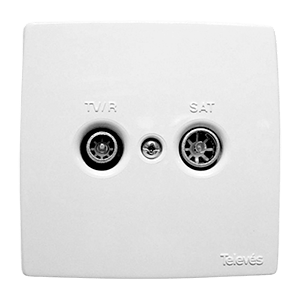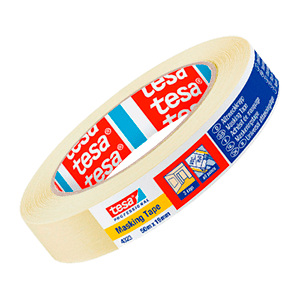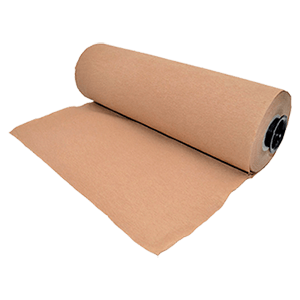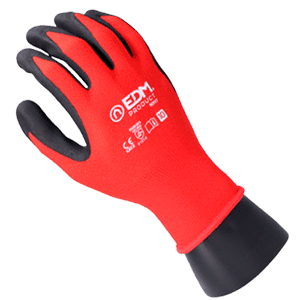
Installation Material & LED Components
It includes all the installation material in terms of automation such as power outlets, battens, switches, switchgears, dimmers, door bells, and the most common components for installations allowing the costumer to build its own designs or to get spare parts such as COB High Power, High Power LEDs, High Range components and LED drivers.
We consider Led components to all the necessary elements to be able to assemble LED modules with all their components and 100% operative. The main parts for the assembly of LED modules are:
- Heatsink: It is a vital component in this type of facility since it is responsible for dissipating heat. This type of modules provide a large amount of light in a very small space. In this way, heat dissipation is a vital factor since, if an adequate dissipation is not carried out, the life of the LED module can be compromised. As for ventilation, it can be natural or forced ventilation (aided by a fan like those used in computers).
- Driver: Also known as a power source. It is responsible for providing the voltage and amperage necessary to operate the module. It is very important to know these parcels since they are not like other products that work at 12/24 VDC. If a mistake is made in the feeding of this type of modules, it is very likely that it will occur in.
- Module: Normally this type of modules is usually of the COB (Chip on Board) technology. These provide a greater amount of illumination with the same consumption as the SMD type chips. It is the main component of an installation, since it is in charge of providing the illumination. As mentioned earlier, this type of modules get hot because they provide a large amount of light in a very small space.
- Lens: This component, however simple it may seem, is responsible for making the lighting provided by it have a larger or smaller aperture angle depending on the choice of the lighting. client.
Installation material
Within this category you can include the simplest elements within the electrical installations, being able to find from switches, timbres, strips, etc.
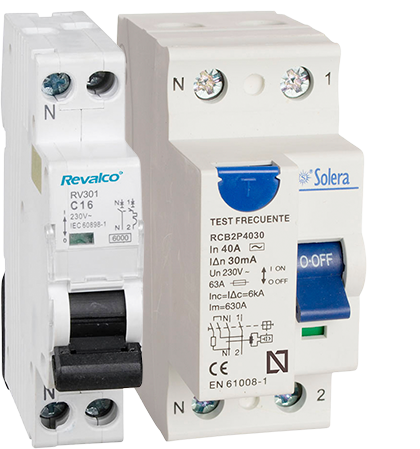
In this category
-
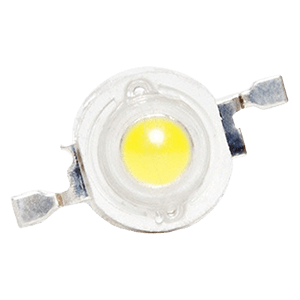
LED Components
LED components include the categories of COB High Power, High Power LEDs,...
-
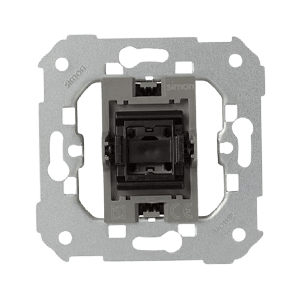
Installation Materials
En los interruptores y dimmers se pueden conseguir interruptores simples, dobles, de...
-
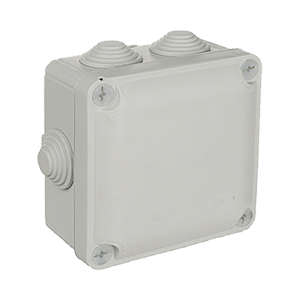
Installation Material - Retail
Llevar a cabo instalaciones en el ámbito del retail o comercial es...
-
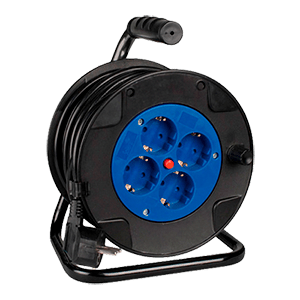
Extension Cables and Cable Reels
El uso de prolongadores y enrollacables está muy extendido tanto a nivel...
-
Supplier:GreenIce
Driver Non Dimmable Downlight LED 18W
Usual price £2.00Usual priceUnit price / by£5.00Offer price £2.00 Discount -60%Delivery in 48 hCharacteristics- Warranty 3 years
- Dimable : No
- Facility : IP20
Offer -
Supplier:GreenIce
Driver Non Dimmable 0.95 F.P. 50.000H Slimline Downlight 20W
Usual price £3.00Usual priceUnit price / by£4.00Offer price £3.00 Discount -25%Delivery in 48 hCharacteristics- Warranty 3 years
- Dimable : No
- Facility : IP20
- Estimated life (H) : 50000
Offer -
Supplier:GreenIce
Module 12W 1,440Lm 6000ºK LED Retrofit Ceiling Lamp 40,000H [AOE-XDD-301-CW]
Usual price £3.00Usual priceUnit price / by£3.00Offer price £3.00 Discount %Stock available soonCharacteristics- Warranty 3 years
- Power (W) : 12.0
- Luminous efficacy (LM/W) : 120
- Power factor (PF) : 0.9
-
Supplier:GreenIce
Driver Non Dimmable Downlight LED 12W
Usual price £2.00Usual priceUnit price / by£4.00Offer price £2.00 Discount -50%Delivery in 48 hCharacteristics- Warranty 3 years
- Dimable : No
- Facility : IP20
Offer -
Supplier:GreenIce
Module 18W 2,160Lm 6000ºK LED Retrofit Ceiling Lamp 40,000H [AOE-XDD-303-CW]
Usual price £5.00Usual priceUnit price / by£5.00Offer price £5.00 Discount %Stock available soonCharacteristics- Warranty 3 years
- Power (W) : 18.0
- Luminous efficacy (LM/W) : 120
- Power factor (PF) : 0.9
-
Supplier:Epistar Led
Module 30W 3.000Lm 6000ºK LED Epistar 900Ma 40.000H [CH-COB-30W-EP-CW]
Usual price £7.00Usual priceUnit price / by£9.00Offer price £7.00 Discount -22%Delivery in 48 hCharacteristics- Warranty 3 years
- Power (W) : 30.0
- Luminous efficacy (LM/W) : 100
- Number and type of LEDs : Epistar Led
Offer -
Supplier:GreenIce
Driver Non Dimmable Downlight LED 6W
Usual price £2.00Usual priceUnit price / by£3.00Offer price £2.00 Discount -33%Delivery in 48 hCharacteristics- Warranty 3 years
- Dimable : No
- Facility : IP20
Offer -
Supplier:GreenIce
Module 3W 300Lm 6000ºK 6 LEDs Ø32Mm 50.000H [CH-PCBA3W-CW]
Usual price £2.00Usual priceUnit price / by£2.00Offer price £2.00 Discount %Delivery in 48 hCharacteristics- Warranty 3 years
- Power (W) : 3.0
- Luminous efficacy (LM/W) : 100
- Number and type of LEDs : SMD5630
-
Supplier:GreenIce
LED High Power 5W 500Lm 6000ºK COB 40.000H [CH-COB-5W-CW]
Usual price £2.00Usual priceUnit price / by£2.00Offer price £2.00 Discount %Delivery in 48 hCharacteristics- Warranty 3 years
- Power (W) : 5.0
- Luminous efficacy (LM/W) : 100
- Number and type of LEDs : COB
-
Supplier:GreenIce
Module 5W 500Lm 6000ºK 10 LEDs Ø50Mm 50.000H [CH-PCBA5W-CW]
Usual price £2.00Usual priceUnit price / by£3.00Offer price £2.00 Discount -33%Delivery in 48 hCharacteristics- Warranty 3 years
- Power (W) : 5.0
- Luminous efficacy (LM/W) : 100
- Number and type of LEDs : SMD5630
Offer -
Supplier:GreenIce
LED High Power 3W 220Lm 6000ºK 45X45 Heatsink 50.000H [CH-LED-3W-45MIL-D-CW]
Usual price £1.00Usual priceUnit price / by£2.00Offer price £1.00 Discount -50%Delivery in 48 hCharacteristics- Warranty 3 years
- Power (W) : 3.0
- Luminous efficacy (LM/W) : 73
- Number and type of LEDs : COB
Offer -
Supplier:GreenIce
Driver Non Dimmable LED Panel 42W
Usual price £8.00Usual priceUnit price / by£18.00Offer price £8.00 Discount -55%Stock available soonCharacteristics- Warranty 3 years
- Dimable : No
- Facility : IP65
Offer -
Supplier:GreenIce
Module 12W 1.200Lm 6000ºK 24 LEDs Ø65Mm 50.000H [CH-PCBA12W-CW]
Usual price £4.00Usual priceUnit price / by£5.00Offer price £4.00 Discount -20%Delivery in 48 hCharacteristics- Warranty 3 years
- Power (W) : 12.0
- Luminous efficacy (LM/W) : 100
- Number and type of LEDs : SMD5630
Offer -
Supplier:GreenIce
LED High Power 7W 700Lm 6000ºK COB 40.000H [CH-COB-7W-CW]
Usual price £2.00Usual priceUnit price / by£3.00Offer price £2.00 Discount -33%Delivery in 48 hCharacteristics- Warranty 3 years
- Power (W) : 7.0
- Luminous efficacy (LM/W) : 100
- Number and type of LEDs : COB
Offer -
Supplier:GreenIce
Driver Non Dimmable Slimline Downlights 3W
Usual price £1.00Usual priceUnit price / by£3.00Offer price £1.00 Discount -66%Stock available soonCharacteristics- Warranty 3 years
- Dimable : No
- Facility : IP20
Offer -
Supplier:GreenIce
LED High Power 1W 120Lm 6000ºK 35X35 Heatsink 50.000H [CH-LED-1W-35MIL-D-CW]
Usual price £1.00Usual priceUnit price / by£2.00Offer price £1.00 Discount -50%Delivery in 48 hCharacteristics- Warranty 3 years
- Power (W) : 1.0
- Luminous efficacy (LM/W) : 120
- Number and type of LEDs : COB
Offer -
Supplier:GreenIce
Driver Dimmable Downlight LED 3W
Usual price £3.00Usual priceUnit price / by£3.00Offer price £3.00 Discount %Stock available soonCharacteristics- Warranty 3 years
- Dimable : Yeah
- Facility : IP20
-
Supplier:GreenIce
GU10 Ceramic Lampholder 2A 250V PGU10 Solera [E3-44029]
Usual price £1.00Usual priceUnit price / by£1.00Offer price £1.00 Discount %Delivery in 48 hCharacteristics- Warranty 3 years
-
Supplier:Lifud Driver
Driver LIFUD 60W In::220-240VAC Out::33-40VDC Flicker Free
Usual price £14.00Usual priceUnit price / by£20.00Offer price £14.00 Discount -30%Delivery in 48 hCharacteristics- Warranty 5 years
- Facility : IP20
Offer -
-
Supplier:GreenIce
Dimmer LEDs 90-240VAC 0-100% 200W Remote Control
Usual price £18.00Usual priceUnit price / by£19.00Offer price £18.00 Discount -5%Stock available soonCharacteristics- Warranty 3 years
- Facility : IP20
Offer -
Supplier:Lifud Driver
Driver LIFUD 42W In::220-240VAC Out::33-40VDC Flicker Free
Usual price £7.00Usual priceUnit price / by£10.00Offer price £7.00 Discount -30%Ask for it and collect it in 5 daysCharacteristics- Warranty 5 years
- Facility : IP20
Offer -
-
Supplier:GreenIce
LED High Power 3W 300Lm 6000ºK COB 40.000H [CH-COB-3W-CW]
Usual price £2.00Usual priceUnit price / by£2.00Offer price £2.00 Discount %Delivery in 48 hCharacteristics- Warranty 3 years
- Power (W) : 3.0
- Luminous efficacy (LM/W) : 100
- Number and type of LEDs : COB
-
Supplier:GreenIce
LED High Power 3W 220Lm 6000ºK 45X45 50.000H [CH-LED-3W-45MIL-CW]
Usual price £1.00Usual priceUnit price / by£2.00Offer price £1.00 Discount -50%Delivery in 48 hCharacteristics- Warranty 3 years
- Power (W) : 3.0
- Luminous efficacy (LM/W) : 73
- Number and type of LEDs : COB
Offer -
Supplier:Epistar Led
LED High Power 10W 1.000Lm 6000ºK COB30 50.000H [CH-LED-10W-30MIL-CW]
Usual price £3.00Usual priceUnit price / by£6.00Offer price £3.00 Discount -50%Delivery in 48 hCharacteristics- Warranty 3 years
- Power (W) : 10.0
- Luminous efficacy (LM/W) : 100
- Number and type of LEDs : Epistar Led
Offer -
Supplier:Lifud Driver
Driver LIFUD 38W In::220-240VAC Out::33-40VDC Flicker Free
Usual price £7.00Usual priceUnit price / by£10.00Offer price £7.00 Discount -30%Delivery in 48 hCharacteristics- Warranty 5 years
- Facility : IP20
Offer -
-
Supplier:GreenIce
GU10 Halogen Lampholder 2 A 250 V 15 Cm Cable (Shrunk) [E3-R44033]
Usual price £1.00Usual priceUnit price / by£2.00Offer price £1.00 Discount -50%Delivery in 48 hCharacteristics- Warranty 3 years
Offer -
Supplier:GreenIce
Driver Non Dimmable 0.95 F.P. 50.000H Downlights LED 18W
Usual price £2.00Usual priceUnit price / by£3.00Offer price £2.00 Discount -33%Stock available soonCharacteristics- Warranty 3 years
- Dimable : No
- Facility : IP20
Offer -
Supplier:GreenIce
Driver Dimmable Slimline Downlights 18W
Usual price £8.00Usual priceUnit price / by£12.00Offer price £8.00 Discount -33%Delivery in 48 hCharacteristics- Warranty 3 years
- Dimable : Yeah
- Facility : IP20
Offer -
Supplier:GreenIce
Module 7W 700Lm 6000ºK 15 LEDs Ø50Mm 50.000H [CH-PCBA7W-CW]
Usual price £3.00Usual priceUnit price / by£3.00Offer price £3.00 Discount %Delivery in 48 hCharacteristics- Warranty 3 years
- Power (W) : 7.0
- Luminous efficacy (LM/W) : 100
- Number and type of LEDs : SMD5630
-
Supplier:GreenIce
Corrugated Tube D.25 Ng. Tupersa [CO-070500025]
Usual price £1.00Usual priceUnit price / by£1.00Offer price £1.00 Discount %Delivery in 48 hCharacteristics- Warranty 3 years
-
Supplier:Epistar Led
Module 18W 1.800Lm 6000ºK LED Epistar 600Ma 40.000H [CH-COB-18W-EP-CW]
Usual price £5.00Usual priceUnit price / by£11.00Offer price £5.00 Discount -54%Delivery in 48 hCharacteristics- Warranty 3 years
- Power (W) : 18.0
- Luminous efficacy (LM/W) : 100
- Number and type of LEDs : Epistar Led
Offer -
Supplier:GreenIce
Module 9W 900Lm 6000ºK 18 LEDs Ø65Mm 50.000H [CH-PCBA9W-CW]
Usual price £3.00Usual priceUnit price / by£4.00Offer price £3.00 Discount -25%Delivery in 48 hCharacteristics- Warranty 3 years
- Power (W) : 9.0
- Luminous efficacy (LM/W) : 100
- Number and type of LEDs : SMD5630
Offer -
Supplier:GreenIce
WiFi Switch Compatible with Conventional Switch and Push Button
Usual price £12.00Usual priceUnit price / by£12.00Offer price £12.00 Discount %Delivery in 48 hCharacteristics- Warranty 3 years
- Power (W) : 250.0
- Facility : IP20
-
Supplier:GreenIce
Driver Non Dimmable 0.95 F.P. 50.000H Downlights LED 6W
Usual price £2.00Usual priceUnit price / by£3.00Offer price £2.00 Discount -33%Stock available soonCharacteristics- Warranty 3 years
- Dimable : No
- Facility : IP20
- Estimated life (H) : 50000
Offer -
Supplier:GreenIce
Driver Non Dimmable Slimline Downlights 20W
Usual price £3.00Usual priceUnit price / by£6.00Offer price £3.00 Discount -50%Delivery in 48 hCharacteristics- Warranty 3 years
- Dimable : No
- Facility : IP20
Offer -
Supplier:GreenIce
Driver Dimmable Slimline Downlights 12W
Usual price £6.00Usual priceUnit price / by£9.00Offer price £6.00 Discount -33%Stock available soonCharacteristics- Warranty 3 years
- Dimable : Yeah
- Facility : IP20
Offer -
Supplier:GreenIce
Driver Dimmable Downlight LED 7W
Usual price £5.00Usual priceUnit price / by£6.00Offer price £5.00 Discount -16%Stock available soonCharacteristics- Warranty 3 years
- Dimable : Yeah
- Facility : IP20
Offer -
Supplier:GreenIce
Corrugated Tube D.20 Ng. Tupersa [CO-070500020]
Usual price £1.00Usual priceUnit price / by£1.00Offer price £1.00 Discount %Delivery in 48 hCharacteristics- Warranty 3 years
-
Supplier:GreenIce
Chain of 20 E27 Lampholders 10 Meters IP65 without Bulbs [HO-CAD-10M-20xE27]
Usual price £36.00Usual priceUnit price / by£39.00Offer price £36.00 Discount -7%Free delivery in 48 hCharacteristics- Warranty 3 years
- Facility : IP65
Offer -
Supplier:PHILIPS
Driver No Dimable PRO 0.95 PF 50,000H 40W 1050Ma
Usual price £9.00Usual priceUnit price / by£14.00Offer price £9.00 Discount -35%Delivery in 48 hCharacteristics- Warranty 3 years
- Power (W) : 44.0
- Power factor (PF) : 0.95
- Estimated life (H) : 50000
Offer -
-
Supplier:Lifud Driver
Driver LIFUD 42W In: 220-240V Out: 25-42VDC
Usual price £9.00Usual priceUnit price / by£14.00Offer price £9.00 Discount -35%Delivery in 48 hCharacteristics- Warranty 5 years
- Facility : IP20
Offer -
-
Supplier:GreenIce
Driver Non Dimmable 0.95 F.P. 50.000H Downlights LED 12W
Usual price £2.00Usual priceUnit price / by£2.00Offer price £2.00 Discount %Delivery in 48 hCharacteristics- Warranty 3 years
- Dimable : No
- Facility : IP20
- Estimated life (H) : 50000
-
Supplier:Epistar Led
LED High Power 50W 5.000Lm 6000ºK COB30 50.000H [CH-LED-50W-30MIL-CW]
Usual price £11.00Usual priceUnit price / by£16.00Offer price £11.00 Discount -31%Delivery in 48 hCharacteristics- Warranty 3 years
- Power (W) : 50.0
- Luminous efficacy (LM/W) : 100
- Number and type of LEDs : Epistar Led
Offer -
Supplier:GreenIce
LED High Power 1W 120Lm 6000ºK 35X35 50.000H [CH-LED-1W-35MIL-CW]
Usual price £1.00Usual priceUnit price / by£2.00Offer price £1.00 Discount -50%Delivery in 48 hCharacteristics- Warranty 3 years
- Power (W) : 1.0
- Luminous efficacy (LM/W) : 120
- Number and type of LEDs : COB
Offer -
Supplier:PANASONIC
Outlet Panasonic Karre 16A 250V Metal Frame With Claws/Child Protection/Housing White
Usual price £6.00Usual priceUnit price / by£6.00Offer price £6.00 Discount %Delivery in 48 hCharacteristics- Warranty 3 years
-
Supplier:GreenIce
Dimmer LED 200-250VAC 10-100% ► 630W
Usual price £19.00Usual priceUnit price / by£19.00Offer price £19.00 Discount %Delivery in 48 hCharacteristics- Warranty 3 years
- Facility : IP20
-
 Supplier:Samsung Led
Supplier:Samsung LedModule 1.3W 130Lm 6000ºK 3 LEDs PRO 5630 Injected IP67 Optical 50,000H [RA-BL-5630W03-LENS-R-CW]
Usual price £2.00Usual priceUnit price / by£3.00Offer price £2.00 Discount -33%Delivery in 48 hCharacteristics- Warranty 3 years
- Power (W) : 1.0
- Luminous efficacy (LM/W) : 130
- Power factor (PF) : 0.8
Offer -
Supplier:Epistar Led
LED High Power 30W 3.000Lm 6000ºK COB30 50.000H [CH-LED-30W-30MIL-CW]
Usual price £8.00Usual priceUnit price / by£12.00Offer price £8.00 Discount -33%Delivery in 48 hCharacteristics- Warranty 3 years
- Power (W) : 30.0
- Luminous efficacy (LM/W) : 100
- Number and type of LEDs : Epistar Led
Offer -
Supplier:GreenIce
Driver Non Dimmable Slimline Downlights 25W
Usual price £4.00Usual priceUnit price / by£9.00Offer price £4.00 Discount -55%Delivery in 48 hCharacteristics- Warranty 3 years
- Dimable : No
- Facility : IP20
Offer -
Supplier:GreenIce
Driver Dimmable Slimline Downlights 6W
Usual price £5.00Usual priceUnit price / by£8.00Offer price £5.00 Discount -37%Stock available soonCharacteristics- Warranty 3 years
- Dimable : Yeah
- Facility : IP20
Offer
Product comparator
Installation Material & LED Components
It includes all the installation material in terms of automation such as power outlets, battens, switches, switchgears, dimmers, door bells, and the most common components for installations allowing the costumer to build its own designs or to get spare parts such as COB High Power, High Power LEDs, High Range components and LED drivers.
We consider Led components to all the necessary elements to be able to assemble LED modules with all their components and 100% operative. The main parts for the assembly of LED modules are:
- Heatsink: It is a vital component in this type of facility since it is responsible for dissipating heat. This type of modules provide a large amount of light in a very small space. In this way, heat dissipation is a vital factor since, if an adequate dissipation is not carried out, the life of the LED module can be compromised. As for ventilation, it can be natural or forced ventilation (aided by a fan like those used in computers).
- Driver: Also known as a power source. It is responsible for providing the voltage and amperage necessary to operate the module. It is very important to know these parcels since they are not like other products that work at 12/24 VDC. If a mistake is made in the feeding of this type of modules, it is very likely that it will occur in.
- Module: Normally this type of modules is usually of the COB (Chip on Board) technology. These provide a greater amount of illumination with the same consumption as the SMD type chips. It is the main component of an installation, since it is in charge of providing the illumination. As mentioned earlier, this type of modules get hot because they provide a large amount of light in a very small space.
- Lens: This component, however simple it may seem, is responsible for making the lighting provided by it have a larger or smaller aperture angle depending on the choice of the lighting. client.
Installation material
Within this category you can include the simplest elements within the electrical installations, being able to find from switches, timbres, strips, etc.
Subscribe and get discounts and promotions
Subscribe to the Newsletter at the time of purchase and get a 5% discount on your order.
- When selecting an option, the entire page is updated.
- It opens in a new window.



